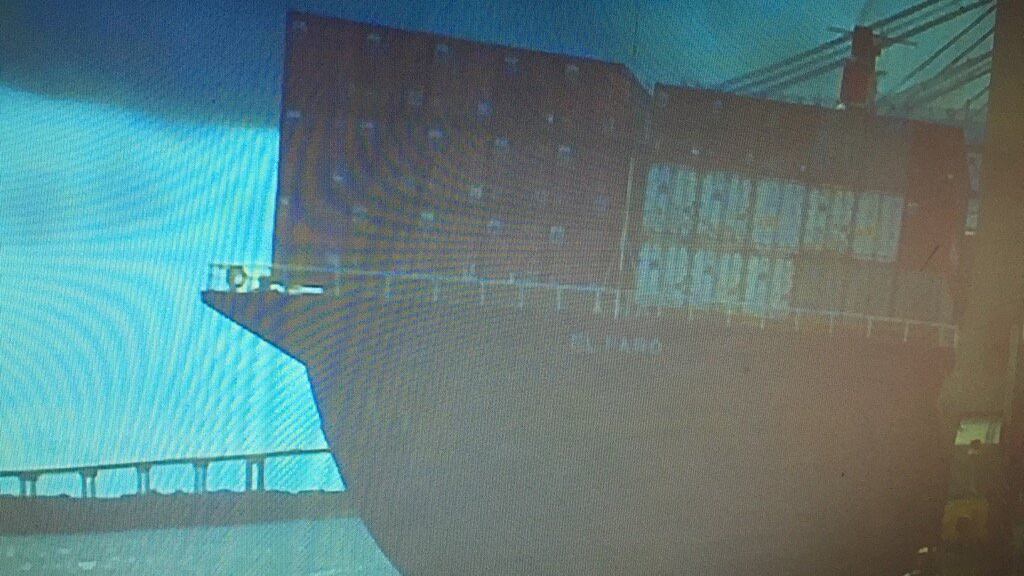Just a day after a report showed that, while El Faro was within stability standards on her final voyage, she wouldn’t have had much flexibility to address problems at sea, we’re learning that there are more sophisticated stability and safety standards being developed.
And an NTSB investigator is focusing in on what changes need to take place to prevent something like this from happening again.
While that's stated goal of the NTSB and Coast Guard Marine Board of Investigation, who will each come out with reports and recommendations, most of the questioning until this point has focused on determining what led up to the fatal voyage and the conditions the ship was experiencing when she went down. NTSB Investigator Eric Stolzenberg directed some of his questioning today around areas that he's looking at potential recommendations.
“I’m just trying to gather what standards exist that we might be able to think about for future vessels,” he says.
Stolzenberg was questioning US Coast Guard Chief of the Naval Architecture Division Jaideep Sirkar, specifically in this line about some regulations on container ships that are longer than 100 meters. Sirkar says they’re already working on a more “sophisticated” calculation for safety and stability for these ships.
FULL COVERAGE: El Faro sinking
While Sirkar was questioned by many members of the MBI about different regulations over the maritime industry and how those have evolved over time, he mostly deferred questions relating specifically to El Faro. This was true as Stolzenberg asked whether supply and ventilation dampers should have been kept closed at sea, and whether that's something that's expected in stability calculations.
“Maybe there’s a hole between what was intended and what happened, and how we might patch that hole going forward, if it indeed exists,” Stolzenberg says.
Stolzenberg also asked about El Faro's conversion to add containers on the deck. The move was not considered a "major conversion", which would have meant the ship needed to abide by some more modern standards- stability and otherwise. The work did add two feet of draft, and Stolzenberg asked whether that's something that should be accounted for when making a determination on whether something is a "major conversion".
“It is not a particularly straightforward task. It has precedent, it has many considerations that are given,” Sirkar says.
There were more modern stability guidelines in existence when El Faro sank in Hurricane Joaquin, but she wasn’t required to abide by them because the rules governing the ship are based on the age of the vessel. Sirkar pointed out to the Board that changes made moving forward largely won’t apply to ships that are already in service.
GALLERY: El Faro wreckage
It's the second straight witness to speak at length about stability on board. Monday night, MBI Technical Advisor Dr. Jeff Stettler, who is also a Naval Architect with the Marine Safety Center, presented a report that he prepared at the request of the MBI dealing with the structure and stability on board. The report determined that El Faro was within the guidelines of a vessel of her age, but would not have been under modern standards. The report further found it "highly unlikely" El Faro would have been able to survive even one hold flooding, given the wind and sea conditions she was facing on her final voyage.
Sirkar also fielded questions about the weather criteria used to determine El Faro’s stability, and specifically, why a change that had been considered by the Coast Guard a few years ago.
“This standard, this rule, this criterion in 170.170 [weather criteria] of initial GM [a stability measurement] has been applied successfully for many years for cargo ships. However, with time, the proportions of ships have been changing and ships that, while meeting the initial GM criteria but for other reasons such as relatively low freeboard or perhaps other proportions, they would not have sufficient stability beyond the initial small angles of heel, even though they met the criteria,” Sirkar says.
Ultimately, the entire change was not adopted, with Sirkar saying they extensively studied it and determined some change would be beneficial, but not the full proposal. They did add a paragraph in to the regulations clarifying how the criteria should be applied.
GALLERY: Inside the third and final MBI hearing session
While the NTSB and MBI are both participating in this hearing session, they will issue findings independent from each other. This is the third hearing session that's been held in Jacksonville by the MBI, and will last through February 17th.
WOKV is at the hearing session and will continue to bring you instant updates on Twitter.









